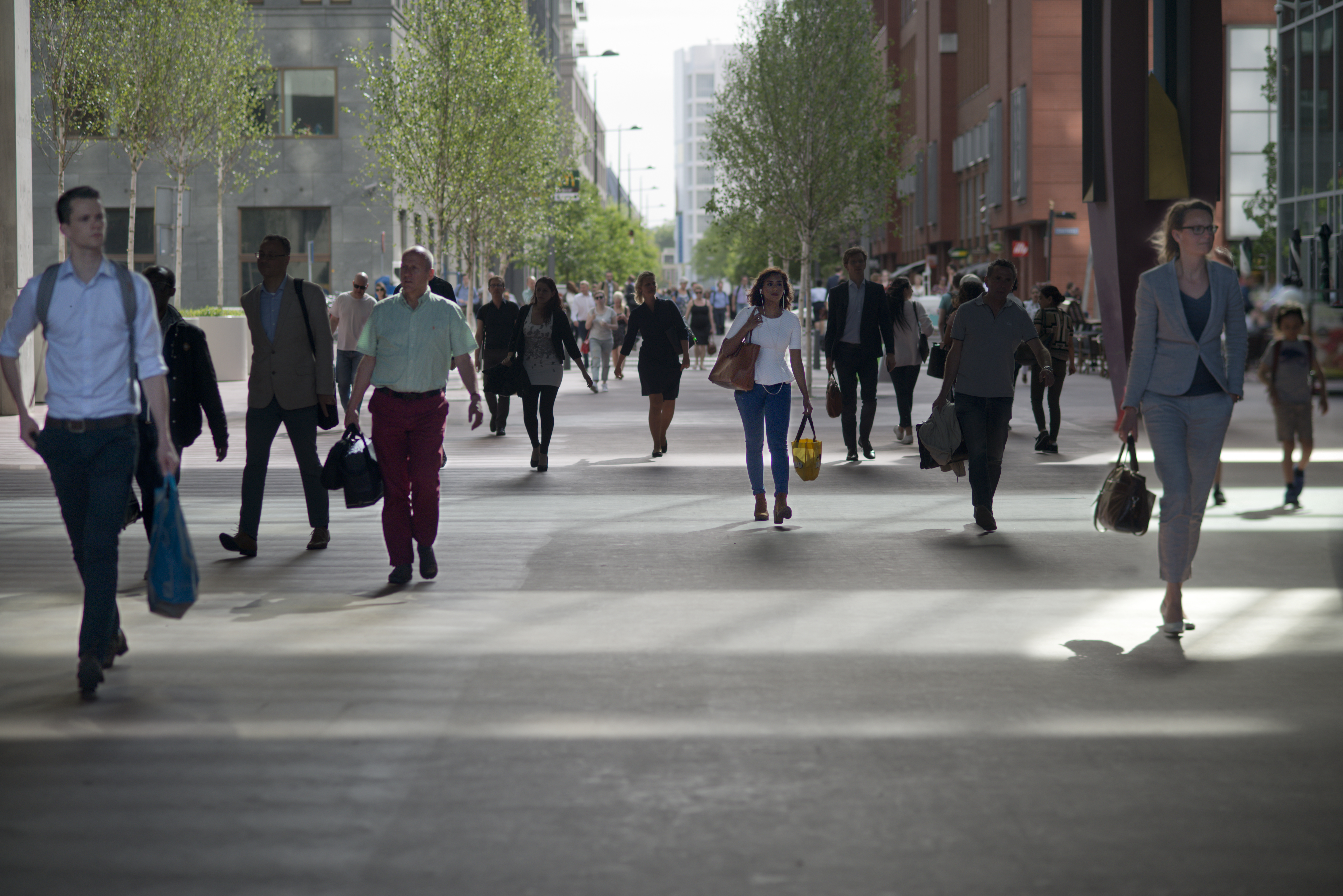Behavioural change / Facilities / Infrastructure / Innovation / Mobility / Pedestrians / Public Spaces / Shared space / Walking
Walking in the Netherlands: Often Overlooked
The following editorial by Mobycon Founder and CEO Johan Diepens was originally published in Dutch for Verkeer in Beeld. You can find the original text here: http://bit.ly/2lQ01M8
Open up a random Dutch municipal mobility plan, go to the table of contents and look up ‘the pedestrian’. The challenges, needs, opportunities, ambitions, analysis, approaches and the measures associated with moving through cities on foot. I’m almost certain you will quickly put the plan aside, with very little information to be found.

But why?
Why is it so difficult to find pedestrian-focused information? Is it related to historical developments or does it have to do with our culture? Of course, the Dutch use the bicycle to travel serious distances, but we also like to walk along a shopping street or through a beautifully landscaped park.
Ten years ago I struggled to understand a foreign visitor who told me that while they could learn a lot from the Netherlands about cycling, there was a lot we could learn from them about making space for the pedestrian. Since then, however, I have recognized he was right; we do have a lot to learn. We have neglected the needs of the pedestrian, considering walking as something that will simply happen, done for short distances and not needing much regard. We have assumed the pedestrian will be fine.
Profiling the Pedestrian
In our cities overcrowded with cyclists, scooters, cars, buses and trucks, we yearn for a smarter, healthier, more sustainable and more efficient use of our public spaces. In these overcrowded cities, the pedestrian is losing out. Space is limited, handed over to moving and parking bicycles and cars. But local governments are slowly beginning to recognise the societal benefits if people are encouraged to travel by foot, especially for distances under two kilometres. If we can achieve that, and leave the bike and car for longer trips, we can create more space in our cities.
In the Netherlands, we need to get a better understanding of how to develop a network for pedestrians and how to design for safe, comfortable interactions with other modes of travel. A profile is needed for the pedestrian, one that addresses accessibility for both young and old, wayfinding and much more. But in these times of MaaS, how can people also maintain their independence and freedom in their mobility choices?
Daring to talk about walking
I hope that by having Walk21 in the Netherlands this October it will force us Dutch people to get off our bikes for a while, challenging us to talk more openly about how we can give ‘walking’ more value in the transportation hierarchy. Then perhaps the pedestrian will see a greater, well-deserved place in our mobility plans!


 ">
">